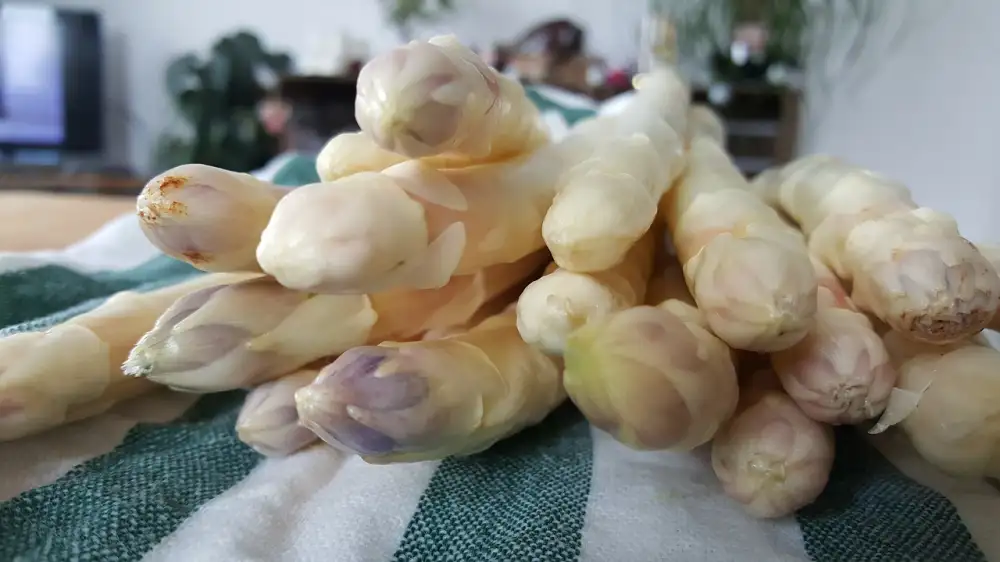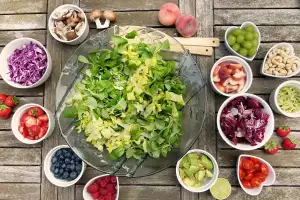Unlock the Secrets of Cooking with White Wine: A Guide to Elevating Your Culinary Creations

- Introduction to White Wine for Cooking
- Understanding the Role of White Wine in Culinary Creations
- Choosing the Right White Wine for Cooking
- Enhancing Flavors with White Wine in Savory Dishes
- Adding Depth and Complexity to Sauces and Soups with White Wine
- Marinating and Tenderizing Meats with White Wine
- Incorporating White Wine in Seafood and Vegetarian Dishes
- Baking and Dessert Ideas with White Wine
- Tips for Cooking with White Wine
- Conclusion: Elevate Your Culinary Skills with White Wine
Introduction to White Wine for Cooking
Introduction to White Wine for Cooking:
White wine is not only a delightful beverage, but it also holds the power to transform ordinary dishes into extraordinary culinary creations. Its acidity, delicate flavors, and aromatic qualities make it a versatile ingredient in the kitchen. Whether you're simmering a savory sauce or baking a delectable dessert, white wine can elevate your dishes to new heights. In this guide, we will unlock the secrets of cooking with white wine and explore the various ways it can enhance your cooking skills. So grab a bottle of your favorite white wine and get ready to embark on a flavorful journey.
Understanding the Role of White Wine in Culinary Creations
White wine is a versatile ingredient that plays a crucial role in elevating the flavors of various dishes. It adds acidity, brightness, and complexity to recipes, enhancing the overall taste profile. The alcohol content in white wine evaporates during cooking, leaving behind rich flavors and aromas.
In savory dishes, white wine acts as a flavor enhancer and deglazing agent. It helps to release the browned bits from the bottom of the pan, adding depth and richness to sauces and gravies. White wine also balances out heavy or fatty ingredients by cutting through their richness with its acidity.
When marinating meats, white wine tenderizes them while infusing them with subtle flavors. It helps to break down proteins and adds moisture, resulting in juicier and more flavorful meat.
In seafood and vegetarian dishes, white wine brings out the natural sweetness of ingredients like shellfish or vegetables. It complements delicate flavors without overpowering them.
White wine can also be used in baking and desserts to add complexity and depth. From poaching fruits to creating delicious glazes for cakes or tarts, it imparts a unique flavor profile that takes your sweet creations to another level.
Understanding how white wine interacts with different ingredients is key to unlocking its full potential in your culinary creations. By incorporating this versatile ingredient into your cooking repertoire, you can elevate your dishes from ordinary to extraordinary.
Choosing the Right White Wine for Cooking
Choosing the right white wine for cooking is essential to elevate your culinary creations. When selecting a white wine, consider its flavor profile and acidity. Dry white wines like Sauvignon Blanc or Chardonnay work well in most recipes, adding a subtle fruitiness and acidity. For lighter dishes, opt for a crisp and acidic wine like Pinot Grigio. If you want to add richness and complexity, try using a buttery and oaky white wine such as oaked Chardonnay. Experiment with different varieties to find the perfect match for your dish.
Enhancing Flavors with White Wine in Savory Dishes
White wine is a versatile ingredient that can elevate the flavors of savory dishes to new heights. When used in cooking, white wine adds depth and complexity, enhancing the overall taste of your creations. Whether you're preparing poultry, vegetables, or even pasta dishes, incorporating white wine can take your culinary skills to the next level.
When sautéing vegetables, deglazing the pan with a splash of white wine adds a burst of flavor. The acidity in the wine helps balance out rich and heavy flavors while imparting a subtle sweetness. It also helps to soften and caramelize the vegetables, creating a deliciously complex taste.
In creamy sauces like Alfredo or carbonara, adding a generous amount of white wine can cut through the richness and add brightness to the dish. The alcohol in the wine evaporates during cooking, leaving behind delicate flavors that enhance the sauce's overall profile.
White wine also works wonders when used as a braising liquid for meats such as chicken or pork. The acidity in the wine helps tenderize tough cuts of meat while infusing them with its own unique flavor. This results in succulent and flavorful dishes that are sure to impress your guests.
Additionally, white wine can be used to create delectable marinades for proteins like fish or shrimp. The acidity helps break down proteins, resulting in more tender and flavorful seafood. It also imparts delicate notes that complement the natural flavors of seafood.
Incorporating white wine into your savory dishes opens up endless possibilities for experimentation and creativity. Its versatility allows you to explore different flavor combinations and create unique culinary masterpieces.
So next time you're cooking up a savory dish, don't forget to unlock the secrets of cooking with white wine. Your taste buds will thank you for it!
Adding Depth and Complexity to Sauces and Soups with White Wine
White wine is a versatile ingredient that can add depth and complexity to sauces and soups. When added to a sauce or soup, white wine helps to enhance the flavors of the other ingredients and adds a subtle acidity that balances out rich or heavy flavors.
When choosing a white wine for your sauce or soup, it's important to consider the flavor profile you want to achieve. A dry white wine, such as Sauvignon Blanc or Pinot Grigio, works well in most recipes as it adds brightness without overpowering the dish. However, if you're looking for a more robust flavor, you can opt for a fuller-bodied white wine like Chardonnay or Viognier.
To incorporate white wine into your sauce or soup, start by sautéing aromatics like onions and garlic in butter or olive oil. Once they are softened, deglaze the pan with a splash of white wine, scraping up any browned bits from the bottom of the pan. This step not only adds flavor but also helps to create a flavorful base for your sauce or soup.
As the alcohol cooks off, the flavors of the white wine meld with the other ingredients, resulting in a complex and well-rounded sauce or soup. The acidity of the white wine can help cut through richness and add brightness to creamy sauces like Alfredo or bechamel.
For soups, adding white wine can elevate simple broths by infusing them with additional layers of flavor. Whether you're making a classic French onion soup or a hearty seafood chowder, adding a splash of white wine can take your soup from ordinary to extraordinary.
Remember that when cooking with white wine, it's important not to use one that you wouldn't drink on its own. The quality of the wine will directly impact the taste of your dish. So choose a bottle that you enjoy sipping and let it work its magic in your sauces and soups.
Incorporating white wine into your culinary creations can truly elevate the flavors of your dishes. Whether you're making a savory sauce, a hearty soup, or a creamy bisque, adding white wine can add depth and complexity that will impress your guests and take your cooking to the next level. So don't be afraid to experiment and unlock the secrets of cooking with white wine.
Marinating and Tenderizing Meats with White Wine
Marinating and tenderizing meats with white wine is a technique that can take your dishes to the next level. The acidity in white wine helps break down the proteins in meat, resulting in a more tender and flavorful final product. When marinating with white wine, choose a dry or semi-dry variety that complements the flavors of the meat. For lighter meats like chicken or fish, opt for a crisp and citrusy white wine. For richer meats like pork or beef, go for a fuller-bodied white wine with hints of oak or butter. Remember to marinate for at least 30 minutes to allow the flavors to penetrate the meat. So next time you're preparing meats, don't forget to unlock their full potential by incorporating white wine into your marinades.
Incorporating White Wine in Seafood and Vegetarian Dishes
Incorporating White Wine in Seafood and Vegetarian Dishes:
White wine can bring a delightful touch to seafood and vegetarian dishes, enhancing their flavors and adding a subtle complexity. When cooking seafood, consider using a dry white wine like Sauvignon Blanc or Pinot Grigio to complement the delicate flavors of fish and shellfish. The acidity in white wine helps balance out the richness of seafood, creating a harmonious taste.
For vegetarian dishes, white wine can be used to add depth and dimension. It works well in sauces for pasta or vegetable dishes, bringing a tangy brightness that cuts through the richness of ingredients like cheese or cream. A Chardonnay or Riesling can lend a fruity note to vegetarian stir-fries or risottos.
When incorporating white wine into seafood or vegetarian recipes, remember to cook off the alcohol before adding other ingredients. This allows the flavors of the wine to meld with the dish without overpowering it. Additionally, be mindful of the amount of wine you use - too much can overpower the dish, while too little may not have enough impact.
Whether you're preparing a seafood feast or exploring creative vegetarian options, don't underestimate the power of white wine. Its versatility and ability to enhance flavors make it an invaluable ingredient in elevating your culinary creations. So go ahead, uncork that bottle and let your imagination run wild in the kitchen!
Baking and Dessert Ideas with White Wine
Baking and Dessert Ideas with White Wine:
White wine can be a secret ingredient in your baking and dessert recipes, adding a unique flavor profile to your sweet creations. When choosing a white wine for baking, opt for one that is slightly sweet or fruity to complement the flavors of your desserts.
In cakes and cupcakes, replace some of the liquid with white wine to add moisture and enhance the taste. For example, a lemon cake can be elevated with a splash of crisp Sauvignon Blanc. In fruit-based desserts like poached pears or apple tarts, simmering the fruits in white wine will infuse them with delicate flavors.
When it comes to sauces and glazes for desserts, white wine can be used as a base. Reduce it down with sugar and spices to create a syrupy glaze for drizzling over cakes or ice cream. White wine can also be incorporated into custards or creamy fillings, adding depth and complexity.
For an elegant twist on classic desserts, try making white wine-infused sorbets or granitas. The acidity of the wine will balance out the sweetness while providing a refreshing burst of flavor. You can even use white wine in poaching liquids for fruits like peaches or apricots, creating a sophisticated dessert that is both light and flavorful.
With these baking and dessert ideas, you can unlock the full potential of white wine in your culinary creations. Experiment with different varieties and flavors to discover new combinations that will impress your guests and elevate your culinary skills.
Tips for Cooking with White Wine
Tips for Cooking with White Wine:
1. Use a wine you enjoy drinking: Since the flavor of the wine will be concentrated during cooking, choose a white wine that you personally enjoy to ensure a delicious end result.
2. Don't use old or oxidized wine: Avoid using white wine that has gone bad or turned brown, as it can negatively impact the taste of your dish.
3. Add the wine early in the cooking process: To allow the flavors to meld together, add white wine early on in your recipe, such as when sautéing vegetables or deglazing a pan.
4. Reduce the wine for intense flavor: Simmering white wine allows it to reduce and intensify in flavor, adding depth to your dishes. Be careful not to over-reduce, as it can become too strong.
5. Balance acidity with sweetness: If your dish becomes too acidic from the addition of white wine, balance it out by adding a touch of sweetness, such as honey or sugar.
6. Experiment with different varieties: Try using different types of white wines in your recipes to discover new flavor profiles and combinations that complement your ingredients.
7. Use caution with delicate flavors: When cooking with delicate ingredients like seafood or light sauces, opt for lighter and more subtle white wines to avoid overpowering their natural flavors.
8. Consider regional pairings: Pairing white wines from specific regions with dishes from those areas can create harmonious flavor combinations that enhance both the food and wine experience.
9. Taste test before serving: Before serving your dish, taste it to ensure that the flavors are balanced and harmonious. Adjust seasoning or add more white wine if needed.
10. Enjoy responsibly: Remember that alcohol does not completely evaporate during cooking, so be mindful of consuming dishes made with white wine if you have dietary restrictions or are serving them to children or individuals who cannot consume alcohol.
Conclusion: Elevate Your Culinary Skills with White Wine
In conclusion, incorporating white wine into your cooking can truly elevate your culinary skills. Its unique flavors and acidity can enhance the taste of savory dishes, add depth to sauces and soups, tenderize meats, and bring out the best in seafood and vegetarian dishes. Additionally, white wine can be a secret ingredient in baking and desserts, adding complexity and richness to your creations. Remember to choose the right white wine for each dish and follow some simple tips to ensure success. So go ahead, unlock the secrets of cooking with white wine and take your culinary creations to new heights!
Published: 14. 11. 2023
Category: Food



